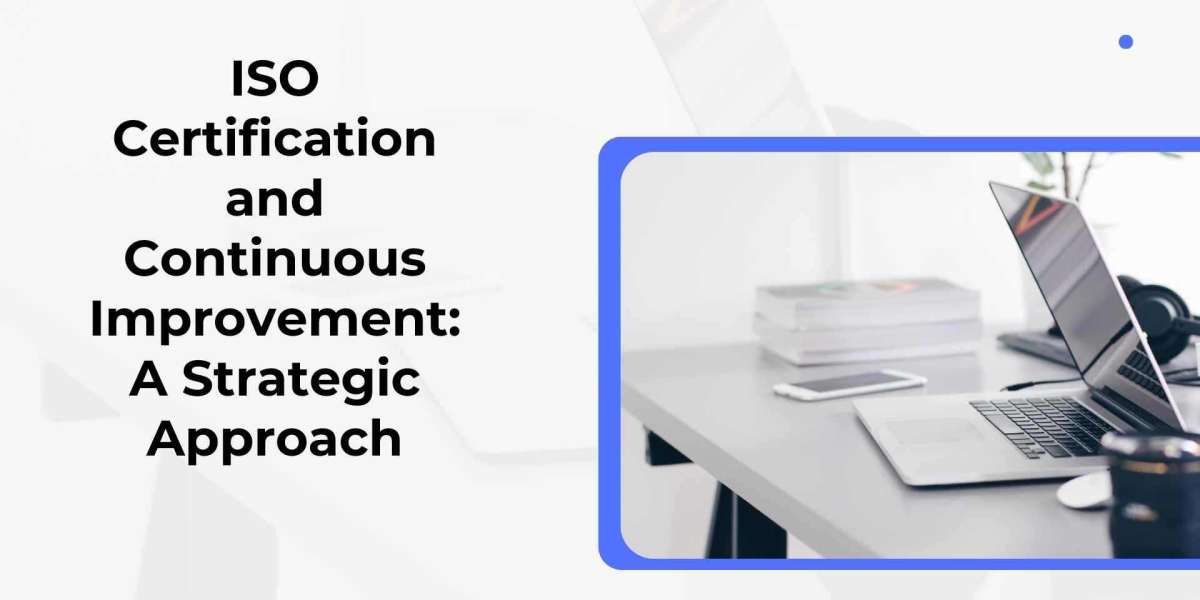Introduction
ISO certification is a mark of quality and efficiency that organizations across various industries aspire to achieve. This certification, governed by the International Organization for Standardization (ISO), represents adherence to internationally recognized standards. However, achieving certification is not the end of the road; it’s the beginning. The real value of ISO Certification comes from embedding a culture of continuous improvement within the organization. This strategic approach ensures that the benefits of certification are sustained and enhanced over time. This article explores how ISO certification and continuous improvement intersect to drive organizational success.
Understanding ISO Certification
ISO standards are designed to ensure products, services, and systems are safe, reliable, and of good quality. For example, ISO 9001 focuses on quality management systems, while ISO 14001 deals with environmental management. Each standard has its own set of requirements and processes that organizations must follow to achieve certification.
Benefits of ISO Certification:
- Enhanced Customer Satisfaction: By adhering to ISO standards, organizations can improve their processes and deliver products and services that meet or exceed customer expectations.
- Operational Efficiency: ISO standards provide a framework for improving organizational processes, leading to increased efficiency and reduced waste.
- Compliance and Risk Management: Certification helps organizations comply with regulatory requirements and manage risks more effectively.
- Market Competitiveness: ISO certification is often required or preferred by customers and partners, giving certified organizations a competitive edge.
The Concept of Continuous Improvement
Continuous improvement is a fundamental concept embedded in ISO standards, notably in the ISO 9001 standard, which includes the principle of “continual improvement” as a core requirement. It involves the ongoing effort to enhance products, services, or processes over time. Continuous improvement is not a one-time project but a systematic approach to enhancing performance.
Key Elements of Continuous Improvement:
- Plan-Do-Check-Act (PDCA) Cycle: This iterative process involves planning changes, implementing them, checking the results, and acting on what has been learned to further refine processes.
- Regular Reviews and Audits: Periodic evaluations help identify areas for improvement and ensure that processes remain effective and compliant with standards.
- Employee Involvement: Engaging employees at all levels in improvement initiatives ensures that changes are practical and sustainable.
Integrating ISO Certification with Continuous Improvement
ISO certification provides a robust framework for continuous improvement. Here’s how organizations can leverage their certification to drive ongoing enhancements:
- Set Clear Objectives: Certification requires organizations to define quality objectives. These objectives should be regularly reviewed and updated to align with continuous improvement goals.
- Implement the PDCA Cycle: The PDCA cycle is essential for continuous improvement. By applying this cycle, organizations can systematically address issues, test solutions, and refine processes.
- Monitor Performance Metrics: ISO standards emphasize the importance of monitoring and measuring performance. By tracking key performance indicators (KPIs), organizations can identify trends, measure progress, and make data-driven decisions.
- Foster a Culture of Improvement: Encourage a culture where employees are motivated to suggest improvements and participate in problem-solving. This involvement not only leverages the collective knowledge of the workforce but also fosters a sense of ownership and commitment.
- Utilize Internal Audits: Regular internal audits, as required by ISO standards, help organizations assess compliance and identify areas for improvement. These audits should be used not just as a compliance check but as a tool for continuous enhancement.
- Engage with Customers and Stakeholders: Continuous improvement is driven by understanding customer needs and expectations. Regularly seeking feedback from customers and stakeholders helps organizations stay aligned with market demands and improve their offerings.
- Invest in Training and Development: Continuous improvement requires that employees are well-trained and knowledgeable. Investing in ongoing training ensures that staff are equipped with the skills and knowledge necessary to contribute to improvement initiatives.
- Review and Update Processes: Regularly review and update organizational processes to ensure they remain relevant and effective. This includes revising standard operating procedures (SOPs) and implementing new best practices.
- Benchmarking: Compare performance against industry standards or competitors to identify areas where improvements can be made. Benchmarking helps organizations understand their relative position and areas for growth.
- Leverage Technology: Utilize technology to enhance processes and performance. For example, adopting new software tools for process management or data analysis can provide insights and drive improvements.
Overcoming Challenges
Integrating ISO certification with continuous improvement can present challenges. Organizations may face resistance to change, limited resources, or difficulty in maintaining momentum. Here’s how to address these challenges:
- Change Management: Implement effective change management strategies to address resistance. Communicate the benefits of improvements clearly and involve employees in the change process.
- Resource Allocation: Allocate resources wisely to support improvement initiatives. This includes budgeting for training, technology, and process changes.
- Sustaining Momentum: Maintain focus on continuous improvement by celebrating successes and recognizing contributions. Regularly communicate progress and updates to keep the organization engaged.
Note: You can also Apply for ISO 9001 Certification from our website
Conclusion
ISO certification is valuable, but its true potential is realized through a commitment to continuous improvement. By integrating the principles of constant improvement with ISO standards, organizations can ensure that their certification is not just a badge of honor but a driver of sustained success. Through strategic planning, ongoing evaluation, and active employee engagement, organizations can continuously enhance their processes, products, and services, achieving long-term growth and excellence.







